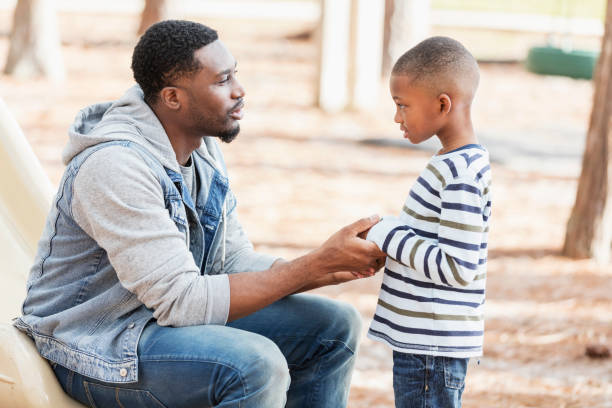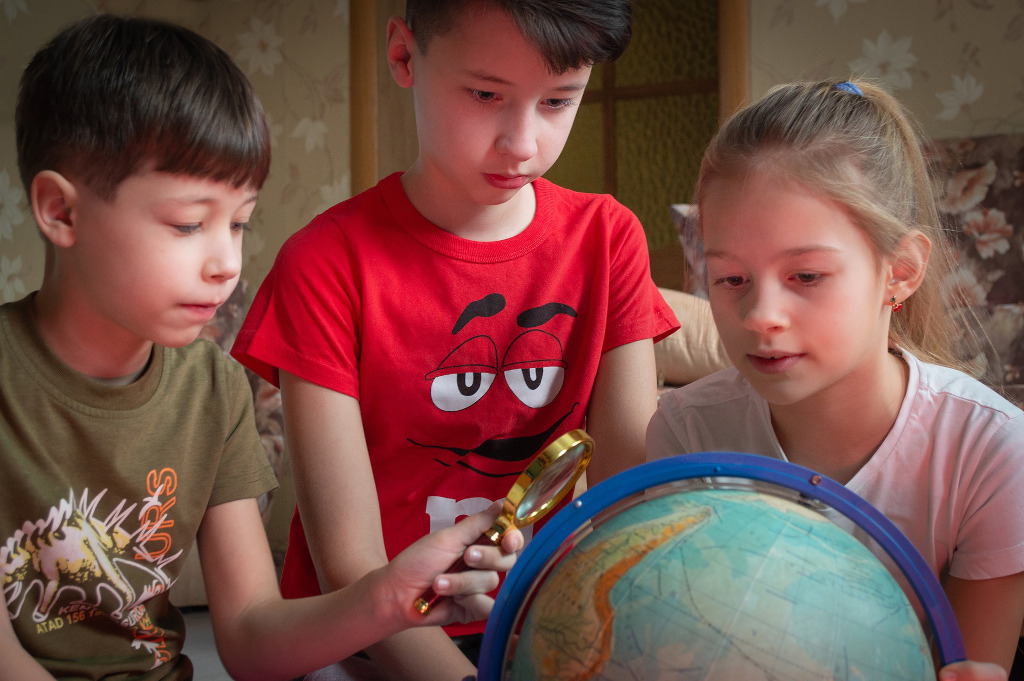How to Teach Your Child to Safely Talk to Strangers

Interacting with strangers is a natural part of life, but for many children, it can be daunting. Their discomfort often stems from a lack of experience or uncertainty about what to say, making them shy or reluctant to engage. While it’s essential to teach children about the dangers of talking to strangers, it’s equally important to help them learn how to do so safely and confidently in appropriate situations. Here’s a comprehensive guide for parents to help their children navigate these interactions.
1. Role-Playing Scenarios
Practice Makes Perfect Many children feel nervous because they don’t know how to initiate or respond in conversations with unfamiliar adults. Role-playing is an effective way to equip them with the words and confidence to handle real-life situations. Start by simulating common interactions, such as meeting a new teacher, asking for directions, or requesting help from a store employee.
Encourage your child to practice basic conversational phrases like:- “Hello, my name is [your child’s name]. It’s nice to meet you.”- “Excuse me, could you help me, please?”- “I’m looking for my mom. Can you help me find her?” These phrases serve as rehearsed tools that children can fall back on when they feel unsure, giving them the confidence to speak without freezing up. You can make these role-plays more engaging by acting out different scenarios or even switching roles, allowing your child to play both the adult and the child.
2. Setting Clear Boundaries
Teach Safety Rules While it’s important to help children feel comfortable talking to strangers, parents must set clear boundaries to ensure safety. Explain the difference between safe strangers—like police officers, teachers, or store employees—and people they don’t know who may not be trustworthy. Teach them to recognize situations where it’s appropriate to engage with strangers and when it’s not.
Ensure your child understands key safety rules, such as:- Never share personal information, like their address, phone number, or school name, with a stranger.- Never accept gifts, food, or rides from someone they don’t know, even if the person seems nice.- Always ask for permission from a parent or guardian before engaging with an unfamiliar person.
Teach your child polite yet firm phrases to use when establishing boundaries, such as:- “I’m not allowed to talk to strangers without my parents.”- “I can’t share that information. Please talk to my mom or dad.”This reinforces the message that it’s okay to be polite, but their safety always comes first.
3. The Buddy System
Strength in Numbers Many children feel more comfortable approaching strangers when they’re with friends or siblings. Encouraging the buddy system can help ease their anxiety in social situations. Whether they’re at the park, in a store, or on a school field trip, remind your child that it’s always safer and easier to approach a stranger with someone else.
Teach your child phrases they can use in group settings, like:- “Can my friend and I ask you for directions?”- “We need help finding something. Could you please assist us?”
The buddy system not only increases safety but also helps children build confidence in their social interactions by allowing them to share the experience with a peer. Over time, this shared experience can lead to greater independence as they gradually learn to handle these situations on their own.
4. Trusting Their Instincts
Empower Them to Say No One of the most crucial lessons to teach children is to trust their gut feelings. Often, kids hesitate to walk away from uncomfortable situations because they don’t want to appear rude or feel unsure about their instincts. It’s important to assure your child that if something feels wrong, it probably is, and they have every right to remove themselves from the situation immediately.
Give your child specific words and phrases to use if they feel uneasy:- “I’m going to leave now.”- “I’m not comfortable with this. I need to find an adult I know.”- “I don’t want to talk right now. Thank you.”
Reinforce the message that it’s okay to be direct when their safety is at risk. Encourage them to report any uncomfortable encounters to a trusted adult as soon as possible. Knowing they have permission to leave or say no empowers children to handle difficult situations with confidence.
Why Kids Don’t Feel Comfortable Talking to Strangers
It’s natural for children to feel hesitant when talking to strangers. Their discomfort often stems from:
Fear of Saying the Wrong Thing:Children may worry about making mistakes or embarrassing themselves, especially if they’re shy or introverted.
Lack of Experience: They might not have had enough exposure to social situations where they need to interact with new people, making it feel overwhelming.
Natural Caution: Many kids are instinctively cautious, which is a good thing for their safety but can make them reluctant to engage even when it’s appropriate.
By providing structured practice through role-playing and setting clear boundaries, parents can help children overcome these fears and become more comfortable in social interactions. Building this confidence early in life equips children with the social skills they’ll need to navigate the world safely and effectively.
Conclusion:
Blending Safety with Social Skills Helping children interact with strangers confidently and safely is about striking a balance. While it’s essential to teach them about stranger danger, it’s equally important to provide them with the communication tools they need for everyday interactions. Through role-playing, setting clear boundaries, encouraging the buddy system, and teaching them to trust their instincts, parents can help their children navigate these situations with confidence.
With the right guidance, kids can learn to distinguish between unsafe situations and normal social encounters. By practicing polite phrases and understanding when it’s appropriate to engage or walk away, they will develop the skills needed to interact smartly and safely with strangers in various settings.

